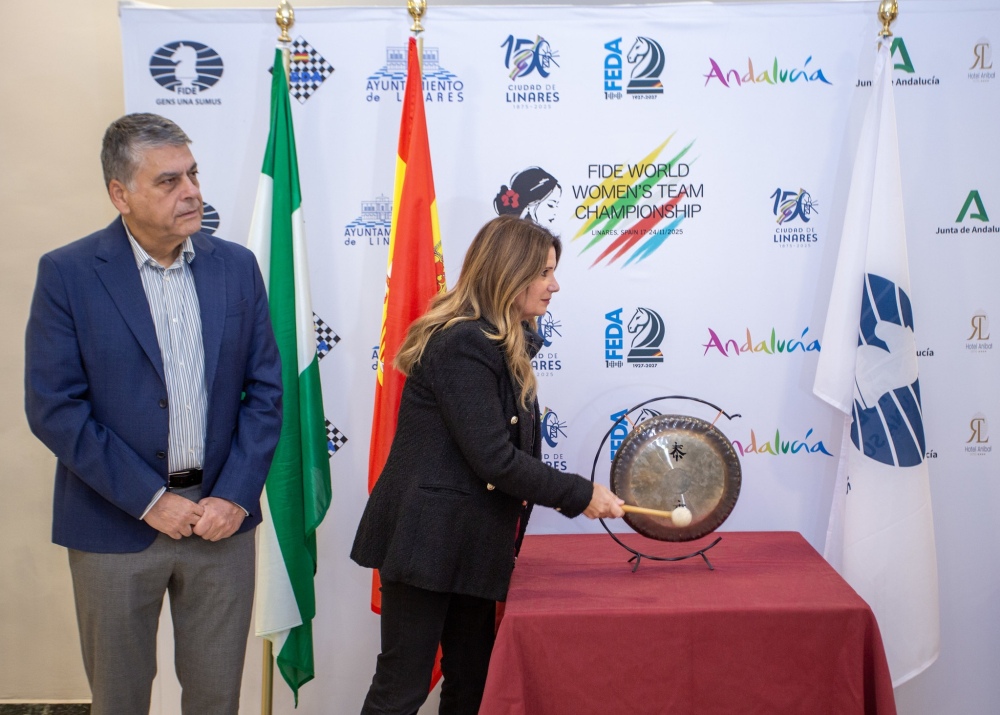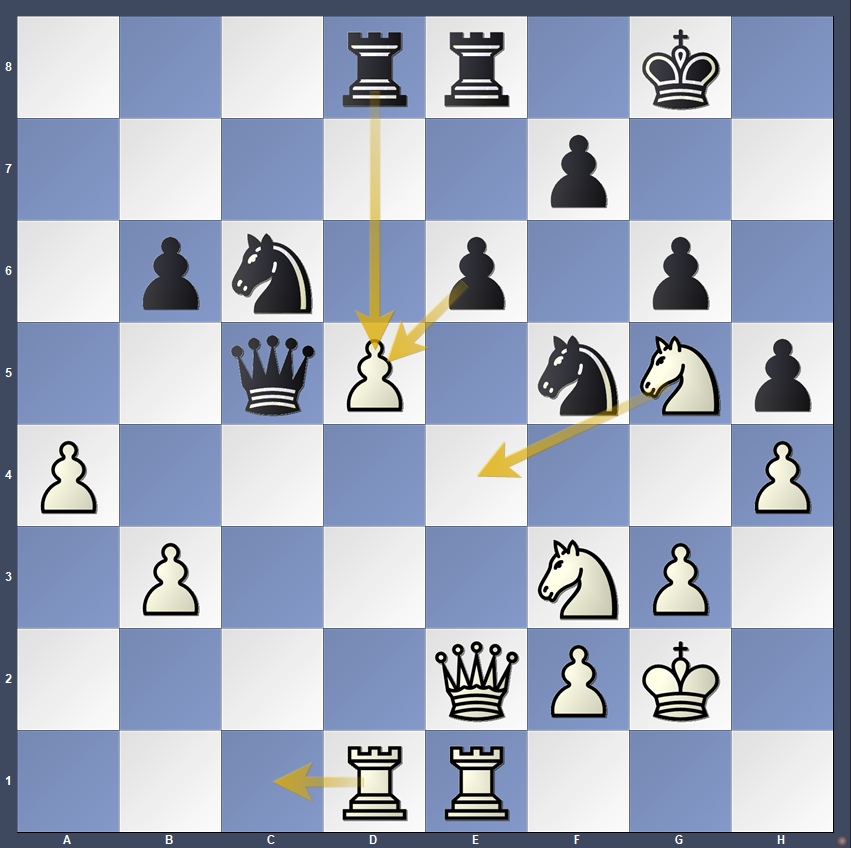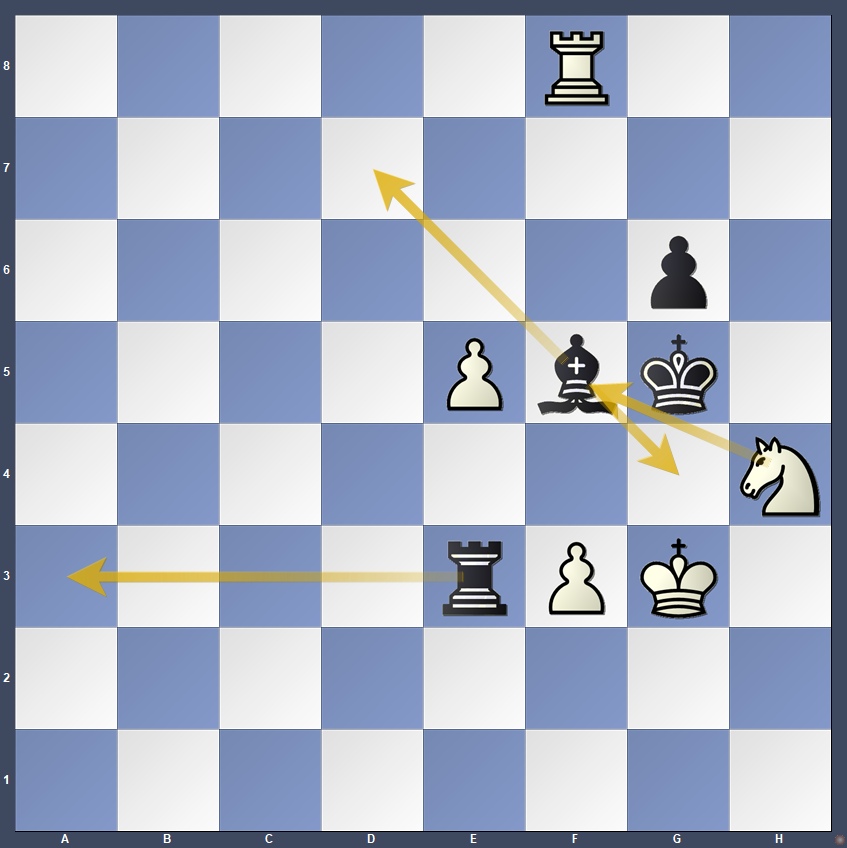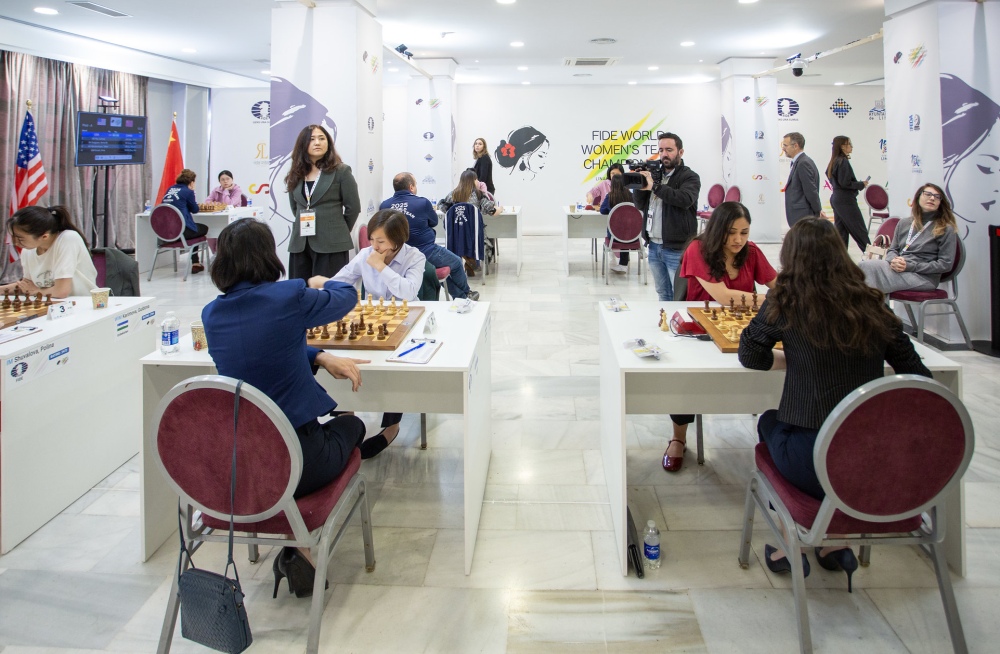
Azerbaijan and Kazakhstan join them after dramatic victories on one of the most thrilling knockout days yet
As the knockout stage began in Linares, the Women’s World Team Championship entered its most thrilling phase. The quarterfinals brought with them a blend of precise preparation, fighting spirit, and bold creativity, producing a memorable day in which favourites were tested, rising stars shone, and several duels remained undecided until the very last move.
China survived a nail-biter against the USA, Team FIDE swept past Uzbekistan with authority, Azerbaijan stunned the higher-rated Georgians, and Kazakhstan edged India in a heart-stopping blitz finish. By sunset, four teams had emerged from the chaos, each carrying a story worthy of the semi-final stage.

Let’s look at how the afternoon unfolded in greater detail in each pool.
The gong ceremony to open each of the rounds was performed María Auxiliadora del Olmo Ruíz (Mayor of Linares) and Raúl Caro-Accino (Deputy Mayor of Linares).
Duel 1: Team FIDE vs. Team Uzbekistan
The most lopsided quarterfinal duel ended decisively in favour of team FIDE, who not only fielded considerably stronger players on every board but also made effective use of their deep bench by bringing in one of their elite reserves. With this victory, they advanced to face China tomorrow in what could easily be described as an anticipated final.
A double 3.5–0.5 sweep left no doubt about their superiority: FIDE has issued a clear statement that they are the team to beat for anyone hoping to claim the title in Linares.

All five players performed superbly this afternoon, but if one had to be singled out, the standout was unquestionably GM Kateryna Lagno (2517), who defeated rising Uzbek talent WIM Umida Omonova (2289) in impressive technical fashion.
Omonova, one of Uzbekistan’s brightest young prospects, is already decorated with multiple medals from Asian Youth and World Youth Championships. In Linares, she further cemented her ascent by crossing the rating threshold to earn her WGM title, a major milestone despite today’s tough pairing.
Duel 2: Team USA vs. Team China
Team China advanced to the semi-finals, where they will face team FIDE, after defeating team USA in a hard-fought and dramatic duel.
On paper, China held a slight rating edge thanks to GM Hou Yifan’s towering presence on board one, but team USA brought significantly more experience, especially given the youthful composition of the Chinese squad.
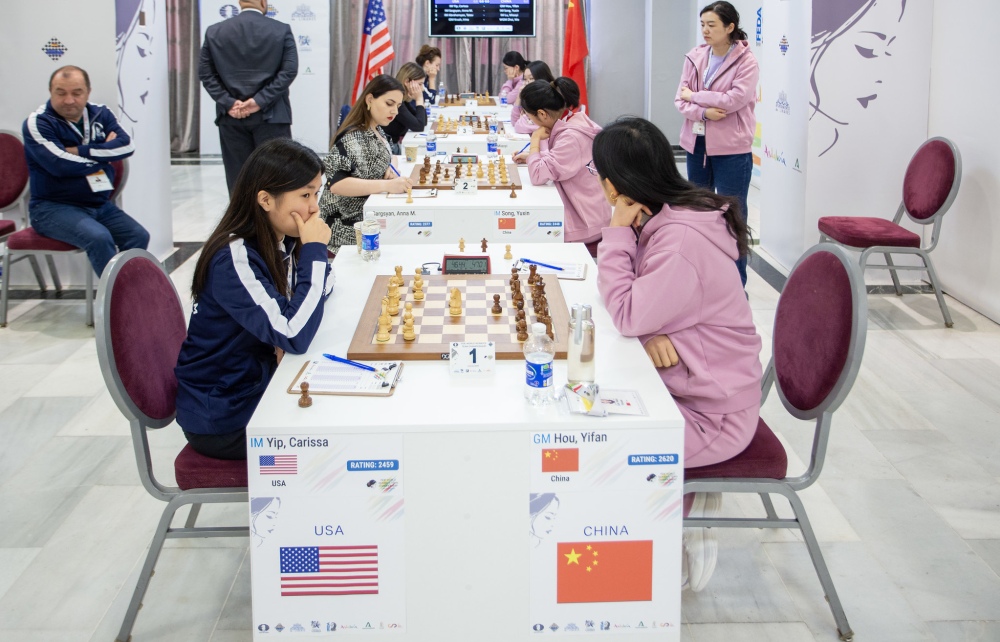
The first classical match ended 3–1 in favour of the USA, putting them in a strong position heading into the second set. Although China was leading the second match overall, a major twist occurred: IM Carissa Yip (2459) scored a stunning win with Black over GM Hou Yifan (2620), while simultaneously IM Anna M. Sargsyan (2377) had IM Song Yuxin (2448) under severe pressure.
A 2–2 draw in the second classical set would have sent the USA to the semi-finals, but it wasn’t to be. Song engineered a resourceful and tricky comeback, saving the game and forcing a tiebreak.
In the deciding 3+2 blitz match, China dominated completely, delivering a crushing 3.5–0.5 victory to clinch their spot in the final four.
A key moment in the classical portion came from board three, where Bent Larsen’s famous maxim “Long variation, wrong variation” proved prophetic, as overcalculation in a complicated line turned the tide at a critical moment.
Playing with Black, IM Lu Miaoyi (2440) was gradually outplaying her opponent, IM Tatev Abrahamyan (2391), on board three. In the diagrammed position, both the solid 22…Rd8 and the more ambitious 22…e5 would have been excellent choices. Instead, the Chinese prodigy erred with 22…Nxd4?
The idea behind the move is clear: if 23.Nxd4, then 23…Rxf2 gives Black strong counterplay. However, Abrahamyan found the much stronger resource 23.Ne5!, a powerful fork hitting both the queen and the rook. After 23…dxe4 24.Rxe4 Qh5, Lu Miaoyi was relying on the pressure against the rook on d1 to keep the position balanced.
But Tatev, well known for her sharp, fighting style, pressed forward with the brilliant 25.Nxf7! After 25…Qxd1, White had just one winning move, but it was spectacular:
26.Nxh6+! gxh6 27.Rg4+ Kf7 28.Qh7+ Kf6 29.Qg7#, an elegant checkmate that concluded one of the most memorable tactical sequences of the round.
Even though the match finished quite late, I was able to gather the full team and their coaches for a quick post-match interview.
Duel 3: Team Azerbaijan vs Team Georgia
Although Georgia appeared to be the clear favourite on paper, Azerbaijan produced the upset of the afternoon by defeating one of the top contenders for the title. With this remarkable victory, the Azerbaijani team earned their spot in the semi-finals, where they will face Kazakhstan for a place in the championship match.
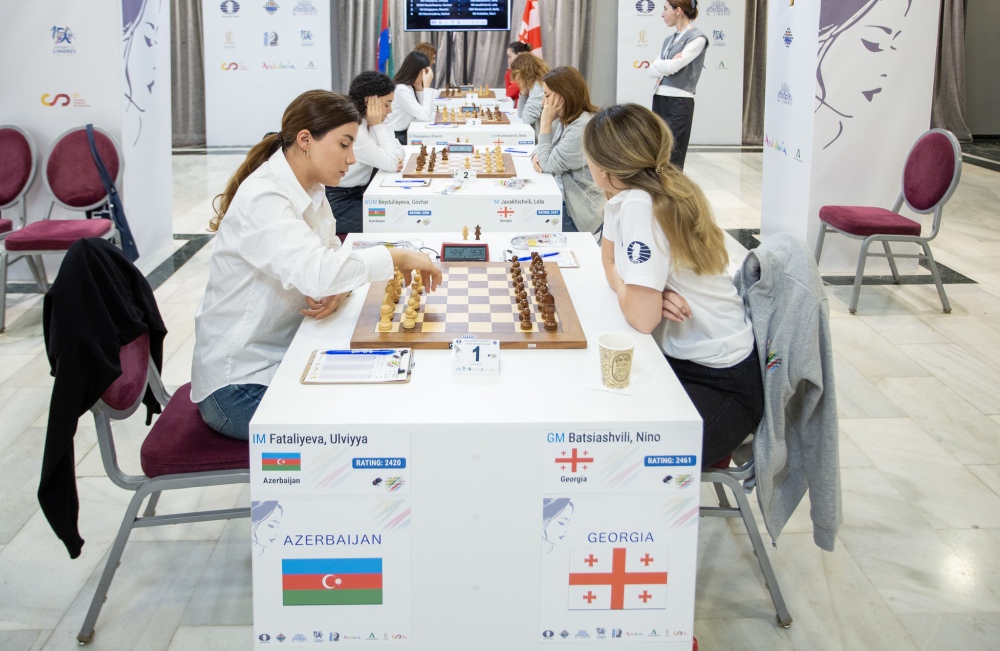
The first match was a thrilling affair, ending in a lively 2–2 scoreline, with all four boards producing decisive results. The fighting spirit on both sides set the tone for what would become one of the most dramatic duels of the day, as neither team showed any interest in quiet, risk-free play.
The game appeared roughly balanced, with no immediate signs that anything could go seriously wrong for Black. However, IM Khanim Balajayeva (2350) demonstrated excellent tactical alertness and produced one of the biggest surprises of the round: an upset that allowed Azerbaijan to tie the first match of the duel against Georgia.
Balajayeva struck with 27.cxd5, and the experienced GM Bella Khotenashvili (2424) faltered by replying with 27…Rxd5? (the simple 27…exd5 would have held the balance). This oversight allowed White to unveil the powerful resource 28.Rc1!, simultaneously attacking the queen and—more importantly—exploiting the loose knight behind it.
After 28…Qd6 29.Ne4!, Black’s position collapsed: the knight on c6 under attack, and if it moves, a decisive fork on f6 ends the game immediately. A crisp tactical finish by Balajayeva at a critical moment of the match.
In the second set, a single win by WGM Govhar Beydullayeva (2358) ultimately sealed the deal for Azerbaijan, who secured a 2.5–0.5 victory and advanced to the semi-finals.
Even though IM Lela Javakhishvili (2427) was a pawn down, most bishop moves should have held the draw given the reduced material and the defensive resources available. But with severe time pressure and two exhausting games behind her, Javakhishvili slipped with 77…Ra3? – a decisive blunder.
After 78.Nxf5 gxf5 79.Rg8+! Kh6 80.Kf4!, the game was effectively over. White simply picks up the pawn on f5, leaving two connected passers and the black king cut off on the edge of the board.
A heart-breaking defeat for the always-reliable Georgian IM and a crucial point for Azerbaijan.
Duel 4: Team Kazakhstan vs Team India
Based on team ratings, Kazakhstan entered the duel as a slight favourite, and their emphatic 3–1 victory in the first match, four decisive games, no draws, suggested that the encounter might already be decided.
But the Indian team showed remarkable resilience, striking back in the second duel with a hard-fought 2.5–1.5 win to force the tiebreaks.
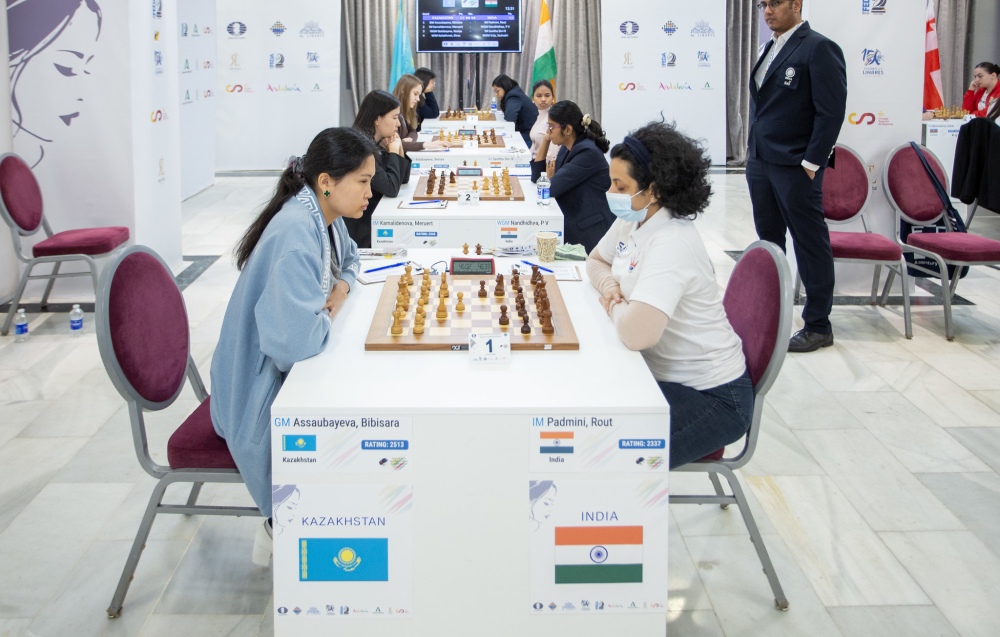
But the Indian team showed remarkable resilience, striking back in the second duel with a hard-fought 2.5–1.5 win to force the tiebreaks.
In the first batch of 3/2 blitz, three boards ended peacefully, raising expectations that a second tiebreak round might be required. Yet, just as the match seemed destined to continue, IM Meruert Kamalidenova (2343) delivered one of the most important blitz victories of her young career, securing Kazakhstan’s place in the semi-finals.
With these results, the semi-final lineup is confirmed:
- Duel 1: China vs FIDE
- Duel 2: Azerbaijan vs Kazakhstan
According to the regulations, each duel consists of two matches with the same time control as the qualifying stage: 45 minutes per player for the entire game, plus a 30-second increment per move starting from move 1.
In the event of a drawn duel – either if each team wins one match, or both matches are drawn – board points will not be used as a tiebreak. Instead, blitz matches will determine the winner.
The first semi-finals match will start on November 22 at 1:30 PM local time.
The action can be followed live on the FIDE YouTube Channel, featuring expert commentary by GMs Antoaneta Stefanova and Ivan Cheparinov.
Official website: worldwomenteams2025.fide.com/
Written by IM Michael Rahal
Photos: Raúl Martínez / Pavel Dvorkovich


